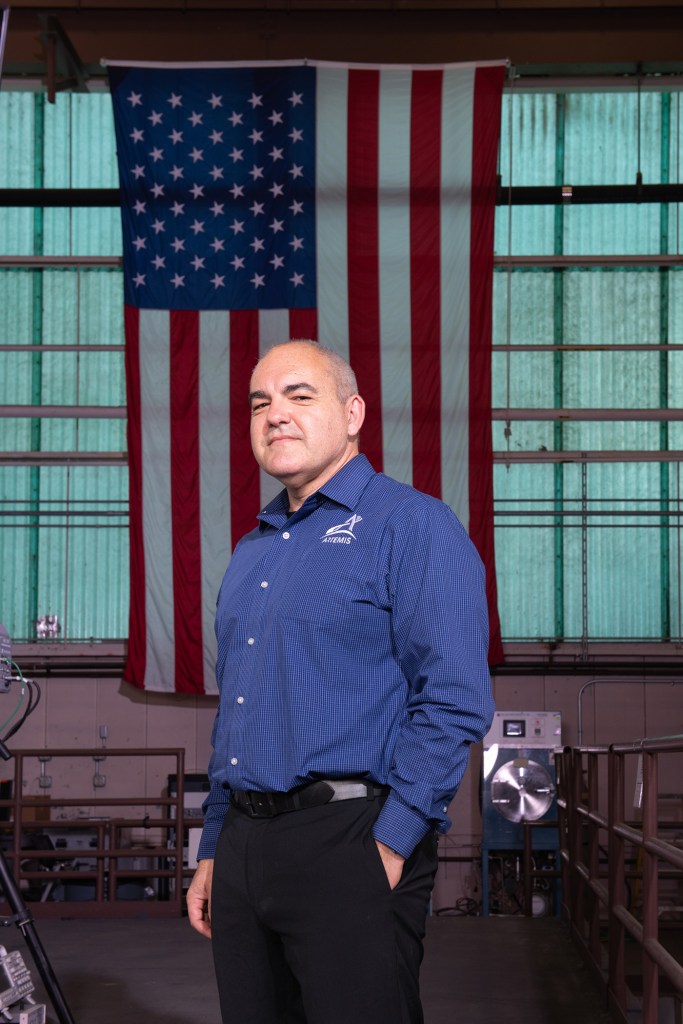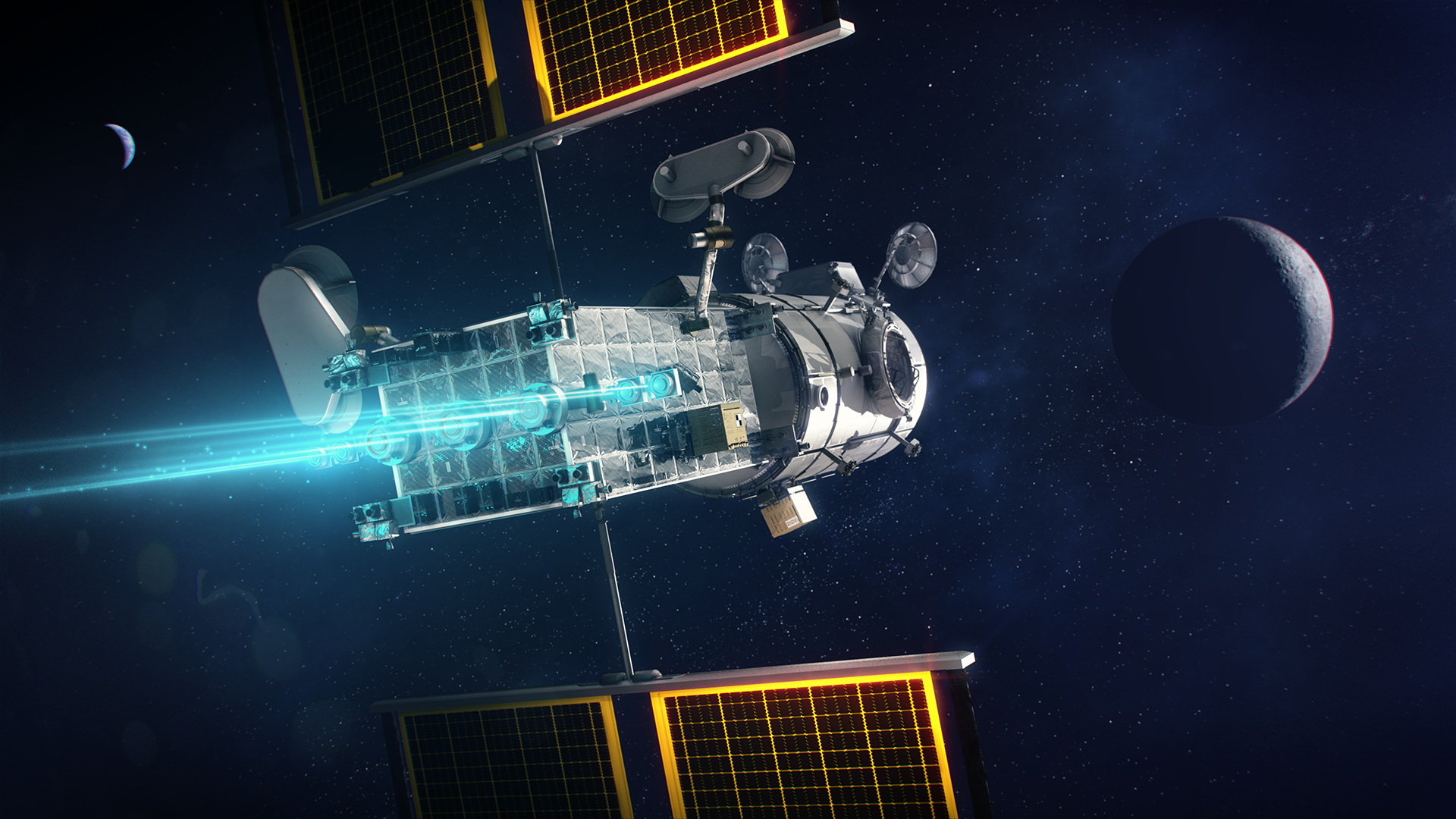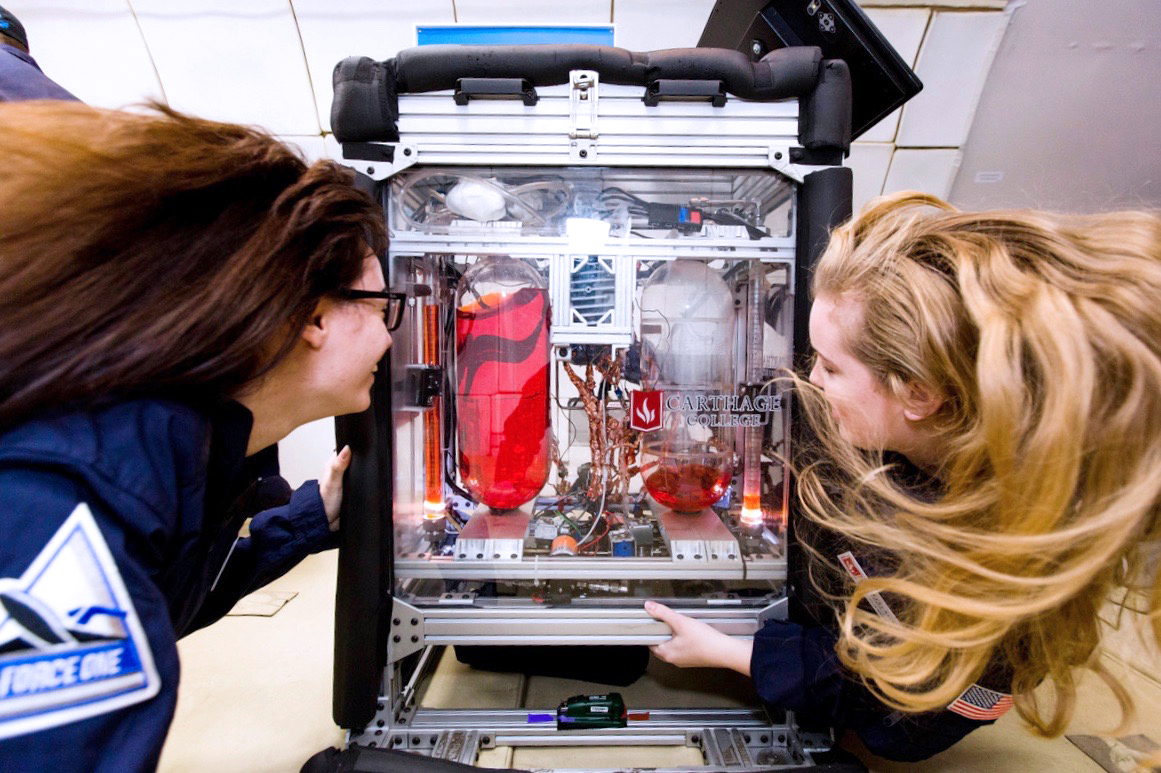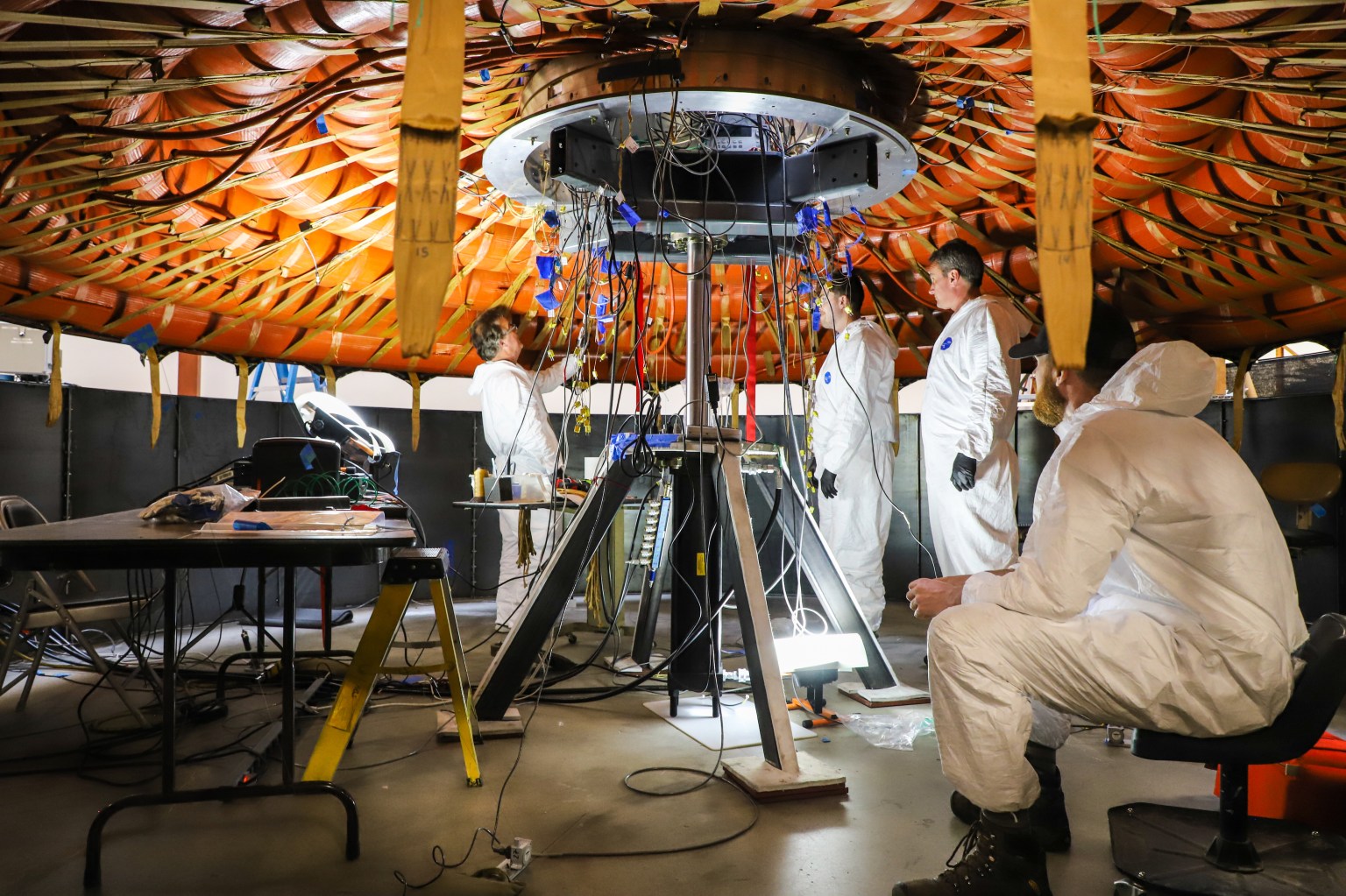As NASA plans to explore the unknown across the solar system, including the Moon and Mars, we also seek to shorten the time required to develop and apply innovative technologies that increase the nation’s capabilities in space, enable future missions and support a variety of commercial spaceflight activities.
NASA’s Solar Electric Propulsion (SEP) project is developing critical technologies to extend the distance and duration of ambitious new exploration and science missions carried out by NASA and its partners. The project aims to demonstrate key technologies necessary for robotic and human exploration-class transportation systems as well as highly efficient orbit transfer capabilities for commercial space operations and science missions.
Latest SEP News
Stay up-to-date with the latest content from NASA as we explore the universe and discover more about our home planet.
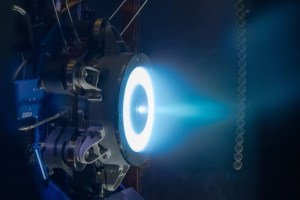
The blue hue of the Advanced Electric Propulsion System (AEPS) is seen inside a vacuum chamber at NASA’s Glenn Research…
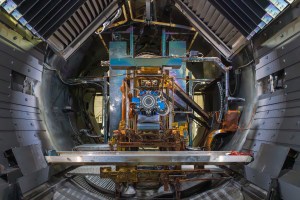
Testing of Gateway’s revolutionary propulsion system, known as the Advanced Electric Propulsion System, begins at NASA’s Glenn Research Center.
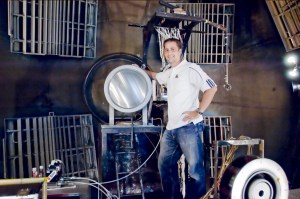
Note: Technology Demonstration Missions “Bridge Builders” are team members at NASA centers and partner organizations who help take various groundbreaking,…
How SEP Works
In-space electric propulsion systems, such as SEP, tout extremely high fuel economy at lower thrust, providing mission flexibility and capabilities not achievable using traditional propulsion systems.
With SEP, the spacecraft collects energy from the Sun via solar arrays to generate thrust, eliminating many of the needs and limitations of storing propellants onboard. That solar energy is then converted to electric power and used to ionize – or positively charge – inert gas propellants like xenon and krypton. A combination of electric and magnetic fields then accelerate the ions and pushes them out of the thruster, creating a greenish-blue plasma plume, propelling the spacecraft to tremendous speeds over time to travel between destinations, station keep, and perform orbital transfers.
SEP systems use approximately 10 times less propellant than a comparable conventional chemical propulsion system, such as those used to propel the Orion spacecraft or space shuttle. The reduced fuel mass significantly reduces launch costs while delivering robust in-space propulsion capable of sending robotic and crewed missions well beyond low Earth orbit to distant destinations, like the Moon, Mars, and the outer solar system.
Hundreds of spacecraft across NASA and the commercial sector are already using SEP, typically operating in the 1-10 kilowatt (kW) range. But as NASA prepares to use electric propulsion for more ambitious science and technology missions, and on human missions for the first time, the agency needs to increase the power available.
NASA, Aerojet Rocketdyne Put Gateway Thruster System to the Test
Testing of Gateway’s revolutionary propulsion system, known as the Advanced Electric Propulsion System, begins at NASA’s Glenn Research Center.
Read the Story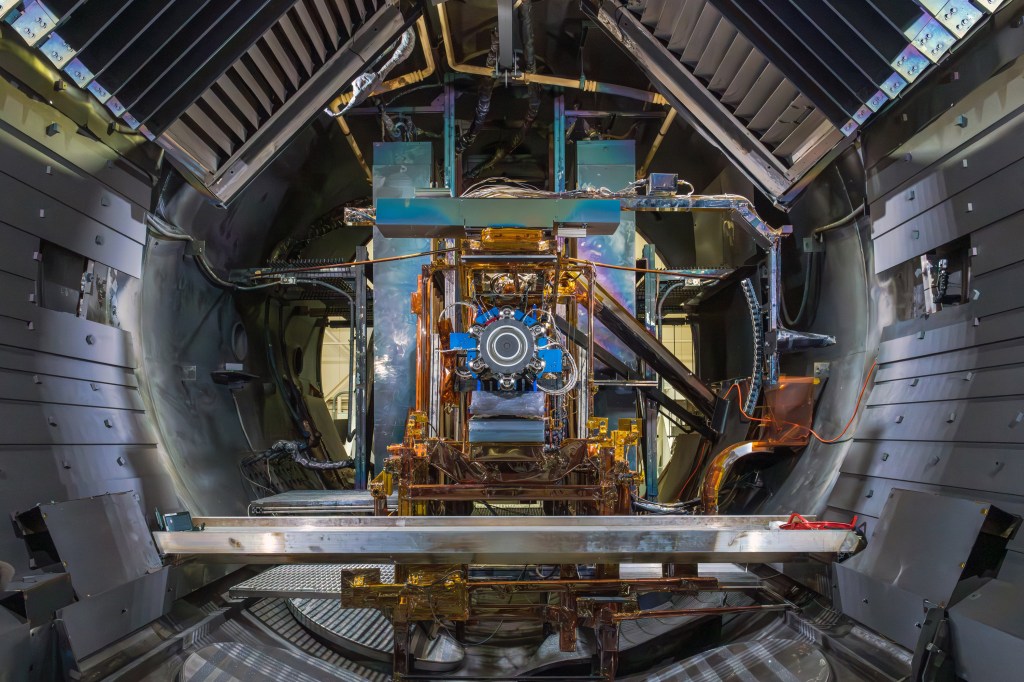
Advanced Electric Propulsion System
Since 2015, NASA engineers have been developing and testing a new 12-kW Hall thruster that employs magnetic shielding, enabling it to operate continuously for years. Known as the Advanced Electric Propulsion System (AEPS), this innovative thruster is being designed, built, and demonstrated by NASA and Aerojet Rocketdyne with the ultimate goal of maturing the technology to be used on operational spacecraft to achieve NASA’s mission.
In April 2020, the SEP project was tasked with providing three 12-kW thrusters for Gateway’s Power and Propulsion Element (PPE). These thrusters will serve as its primary source of propulsion, enabling orbital transfer and maneuvering. This will be the first demonstration of advanced, high-power SEP to maintain a spaceship’s position and move it to different orbits.
The SEP project successfully completed the AEPS Critical Design Review in March 2022. In July 2023, NASA’s SEP project began a year-long qualification test of the AEPS thruster at NASA’s Glenn Research Center. This was the first of two thruster qualification tests that will subject it to the vibration, shock, and thermal environments expected during launch and flight conditions, while several thruster fire ups will be conducted to simulate flight operations.
While qualification testing is conducted, NASA and Aerojet Rocketdyne are simultaneously building the three flight thrusters that will be acceptance tested at NASA Glenn before the anticipated delivery and integration with the PPE before Gateway’s planned launch in 2025.
The SEP project is a part of the Technology Demonstration Missions program within NASA’s Space Technology Mission Directorate. NASA Glenn leads the Solar Electric Propulsion project for the agency.
Faces of Technology: Meet Peter Peterson
Meet Dr. Peter Peterson, an electric propulsion engineer at NASA’s Glenn Research Center. Electric propulsion technologies deliver the right mix of cost savings, safety and superior propulsive power to support a variety of next-generation journeys to destinations in deep space.
Watch the VideoMedia Contact
Jimi Russell
NASA’s Glenn Research Center
james.j.russell@nasa.gov

























